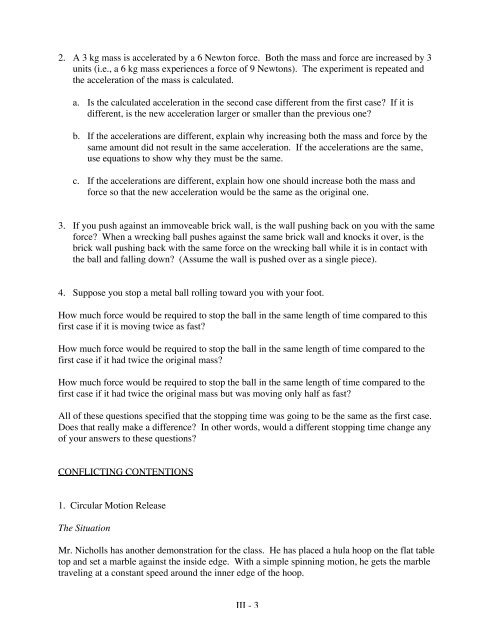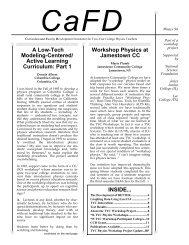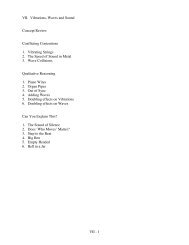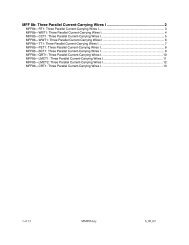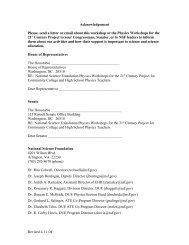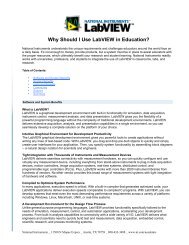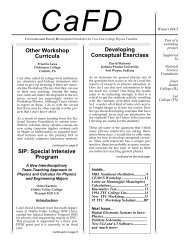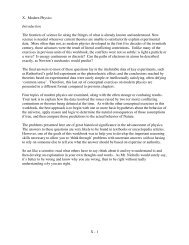III - 1 II. Newton's Laws of Motion Concept Review Warm-Up ...
III - 1 II. Newton's Laws of Motion Concept Review Warm-Up ...
III - 1 II. Newton's Laws of Motion Concept Review Warm-Up ...
You also want an ePaper? Increase the reach of your titles
YUMPU automatically turns print PDFs into web optimized ePapers that Google loves.
2. A 3 kg mass is accelerated by a 6 Newton force. Both the mass and force are increased by 3<br />
units (i.e., a 6 kg mass experiences a force <strong>of</strong> 9 Newtons). The experiment is repeated and<br />
the acceleration <strong>of</strong> the mass is calculated.<br />
a. Is the calculated acceleration in the second case different from the first case If it is<br />
different, is the new acceleration larger or smaller than the previous one<br />
b. If the accelerations are different, explain why increasing both the mass and force by the<br />
same amount did not result in the same acceleration. If the accelerations are the same,<br />
use equations to show why they must be the same.<br />
c. If the accelerations are different, explain how one should increase both the mass and<br />
force so that the new acceleration would be the same as the original one.<br />
3. If you push against an immoveable brick wall, is the wall pushing back on you with the same<br />
force When a wrecking ball pushes against the same brick wall and knocks it over, is the<br />
brick wall pushing back with the same force on the wrecking ball while it is in contact with<br />
the ball and falling down (Assume the wall is pushed over as a single piece).<br />
4. Suppose you stop a metal ball rolling toward you with your foot.<br />
How much force would be required to stop the ball in the same length <strong>of</strong> time compared to this<br />
first case if it is moving twice as fast<br />
How much force would be required to stop the ball in the same length <strong>of</strong> time compared to the<br />
first case if it had twice the original mass<br />
How much force would be required to stop the ball in the same length <strong>of</strong> time compared to the<br />
first case if it had twice the original mass but was moving only half as fast<br />
All <strong>of</strong> these questions specified that the stopping time was going to be the same as the first case.<br />
Does that really make a difference In other words, would a different stopping time change any<br />
<strong>of</strong> your answers to these questions<br />
CONFLICTING CONTENTIONS<br />
1. Circular <strong>Motion</strong> Release<br />
The Situation<br />
Mr. Nicholls has another demonstration for the class. He has placed a hula hoop on the flat table<br />
top and set a marble against the inside edge. With a simple spinning motion, he gets the marble<br />
traveling at a constant speed around the inner edge <strong>of</strong> the hoop.<br />
<strong><strong>II</strong>I</strong> - 3


